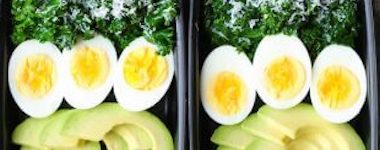
I would like to begin by saying Happy Holiday Season! And before you read this article, remember you should always eat a balanced diet for optimum health. That doesn’t mean stopping by McDonalds for a burger, hitting up Wendy’s for French fries, popping over to the TacoHut for some tacos and breadsticks, then a quick drive thru at DQ for a blizzard. No…..Just…. (sigh)…..Just no. I mean fruits, veggies, carbs (yes carbs) and always sources of lean protein, especially if you are exercising regularly.
You hear the word ‘protein’ all the time. It is a big-time “buzz” word in the health and fitness industry these days. But what does it really mean? What foods have protein in them? How can I get more protein into my diet and what are the benefits? I will cover some of the fundamental questions about nutrition and protein specifically in this blog.
The science:
Proteins are a building block for your body and are contained in every single cell you have. The body needs protein to maintain and repair cells as well as make new ones. It is important for growth during childhood, adolescence, pregnancy, and during times of physical, emotional, and other types of stress.
Fun fact:
Some proteins are “conditional” proteins. Which means that usually the body makes them and does not need to get them from food. EXCEPT during times of stress or illness. So, when you are under stress or are sick, keeping a steady diet high in protein will help keep you more focused and aid your immune system in fighting off evil spirits.
What foods are high in protein?
Before we jump into this answer, first you must know a little about amino acids. Proteins are made up of amino acids. Think of amino acids as the building blocks. There are 20 different amino acids that join together to make all types of protein. Some of these amino acids can’t be made by our bodies. These are known as essential amino acids. It’s essential that our diet provide these.
Protein sources are labeled according to how many amino acids they contain.
A complete protein source is one that provides all of the essential amino acids. Some sources are: meat, poultry, eggs, fish, milk, and cheese.
On the flip side, an incomplete protein source is one that is low in one or more of the essential amino acids. Complimentary proteins are two or more incomplete proteins that together provide all of the necessary amino acids. As an example: Rice does not contain some essential amino acids that are found in greater amounts of beans. Rice and beans together makes for an extremely good snack or meal that is high in protein.
How can I get more protein in my diet?
Here is a list of foods and snacks that are high in protein:
- Greek yogurt (flavored or plain – doesn’t matter for protein content, but be aware of sugar!)
- Turkey breast
- Chicken breast
- Fish
- Eggs
- Low fat cheeses – mozzarella, cottage, or string cheese
- Tofu
- Soy beans
- Milk
- Soymilk
- Nuts and seeds – pumpkin, squash, almond, peanuts, pistachios.
Keep in mind that there are MANY more foods out there that are good sources of nutrient and protein – these are only some!
Protein is Not all the Same
For example Nuts and Beans, can provide a good amount of protein, but the best sources are dairy products, eggs, meat, and fish. Animal protein is complete, it contains the right proportions of the essential amino acids. To build a complete protein from plant-based foods you need to consume 20-25% more plant-based protein to reap the benefits that animal-derived sources provide.
Timing is Important
Your body is constantly breaking down and building protein. Remember for every 30 grams of protein you are triggering approximately 3 hrs of protein synthesis. Most people consume the largest amount of protein at dinner, so this means you are only fueling muscle growth for only a few hours a day. Try to spread your protein intake out throughout the day.
It has been recommended to consume protein before and after a workout for best results. A total of 10 to 20 grams of protein is ideal. Also add a few carbs in as well, this slows down protein breakdown, which speeds up muscle growth after a workout.
Studies have shown 20 grams post workout is the best for muscle growth. There is still several studies out but when you strength train you break the muscle down. Then you need fresh amino acids to repair it.
Powders…Good for Everyone
Everyone…not just gym rats! You can benefit from a quick hit of amino acids provided by a supplement Bar or Shake. Your best bet is a fast-absorbing, high-quality kind like whey protein powder. It has been shown that this type of protein can show in your bloodstream in 15 minutes after you consume it.
At Transformation Fitness and Wellness we exclusively use AdvoCare Products. The products are formulated by an elite Scientific and Medical Advisory Board with over 200 years combined experience in pharmacology, toxicology, nutrition, sports performance and pediatrics.
We recommend:
What if I need more help or have more questions?
Please do not hesitate to reach out if you have any questions or would like to discuss more about protein! We try to keep it simple yet effective! We offer a Free Consultation, either click here or call 317-927-9689.
Have a great day!



Leave a Reply